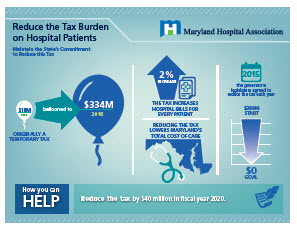Bolstering Neighborhood Health Care Through Area Collaborations And Resources Reveals A Transformative Approach To Healthcare Delivery

Web Content Composed By-Bryant Schaefer
When it comes to enhancing primary care solutions locally, taking advantage of neighborhood sources and support is key. Think of a network of interconnected companies and teams collaborating to boost healthcare accessibility and high quality in your area. From health divisions giving critical data to non-profits offering specialized services, each entity adds to a healthier community. However just how exactly do these collaborations unravel, and what techniques verify most efficient in leveraging these resources for ideal impact? Let's discover the elaborate web of community support and its profound implications on health care solutions.
Significance of Community Interaction
Engaging with the neighborhood is vital for fostering a sense of collaboration and trust within neighborhood medical care services. By proactively including community members in decision-making processes, healthcare providers can better understand the special requirements and challenges dealt with by the population they offer. When healthcare solutions are established in consultation with the area, they're more likely to be reliable and well-received.
Neighborhood engagement likewise plays an essential duty in promoting wellness education and preventive care campaigns. By developing solid relationships with neighborhood citizens, healthcare providers can more effectively communicate important wellness info and encourage healthy behaviors within the area. This proactive technique helps protect against ailments and advertises total wellness among community members.
Furthermore, community involvement fosters a sense of possession and liability among healthcare providers. When https://www.eureporter.co/health/2024/03/05/world-obesity-day-alliance-against-obesity/ is associated with forming medical care solutions, carriers are most likely to be responsive to the needs and preferences of the population they offer. This collective method inevitably causes extra patient-centered care and improved health end results for the neighborhood as a whole.
Key Area Resources
To properly enhance medical care solutions in your area, recognizing and leveraging vital community sources is essential. These resources can consist of neighborhood health departments, area health centers, non-profit companies, and volunteer teams. Local health departments commonly offer beneficial data, proficiency, and assistance for public health initiatives.
Neighborhood health centers provide essential medical solutions to underserved populations, contributing to overall community health. Non-profit companies play a critical role in dealing with certain health and wellness demands, such as mental wellness assistance or chronic illness monitoring. Volunteer teams can give additional workforce and support for health-related events or programs.
Institutions and universities are also substantial community resources that can use health and wellness education and learning programs, research study collaborations, and accessibility to trainee volunteers. Faith-based organizations may provide spiritual and emotional support, along with resources for community members in need. By working together with https://www.google.com/maps?ll=25.761343,-80.194369&z=15&t=m&hl=en&gl=PH&mapclient=embed&cid=12420991527048278862 , primary care companies can boost accessibility to care, deal with health disparities, and improve general community well-being.
Strategies for Collaboration
Take into consideration leveraging existing connections and networks within the neighborhood to develop reliable methods for cooperation. By using established links, you can simplify communication and coordination between various companies and individuals.
Beginning by identifying key stakeholders who share an usual rate of interest in improving health care services in your area. Engage with these stakeholders to create a common vision and established clear goals for cooperation.
Create a communication plan that details how information will be shared, meetings arranged, and progress tracked. Utilize technology such as shared online platforms or group messaging apps to assist in simple interaction.
Frequently review the performance of your cooperation strategies and be open to making modifications as required.
Establishing official contracts or Memorandums of Recognizing (MOUs) with partner companies can aid clarify roles, responsibilities, and expectations. These contracts can likewise address prospective difficulties ahead of time, making sure a smoother cooperation process.
Final thought
In conclusion, area sources and assistance are essential for boosting medical care solutions in your area.
By involving with key stakeholders and working together with numerous companies, medical care providers can much better fulfill the needs of underserved populations and advertise area health.
By interacting, we can ensure that everybody has accessibility to high quality medical care and assistance solutions within their regional community.

